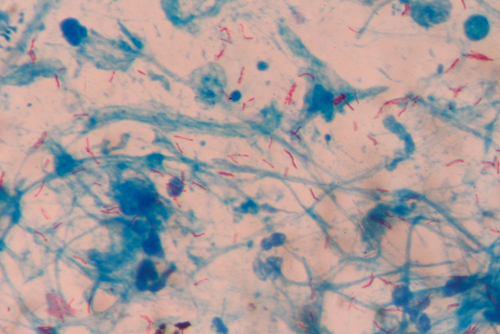Table of Contents
生化Test ofMycobacterium tuberculosis
| Basic Characteristics | Properties (Mycobacterium tuberculosis) |
| 5 % NaCl Tolerance | Negative (-ve) |
| 68°C Catalase Test | Negative (-ve) |
| Acid Fast Stain | Positive (-ve) |
| Acid Phosphatase | Negative (-ve) |
| Amidase Test | Positive (-ve) |
| Arylsulphatase Test | Negative (-ve) |
| Growth at 22°C | Negative (-ve) |
| Growth at 25°C | Negative (-ve) |
| Growth at 42°C | Negative (-ve) |
| Growth at 25°C | Negative (-ve) |
| Growth on P-Nitrobenzoic Acid | Negative (-ve) |
| Growth on TCH (10 mg/ml) | Positive (-ve) |
| Iron Uptake | Negative (-ve) |
| Neutral Red Test | Positive (-ve) |
| Niacin Test | Positive (-ve) |
| Nitrate Reduction Test | Positive (-ve) |
| Pigmentation | Negative (-ve) |
| 过氧化物酶试验 | Positive (-ve) |
| Pyrazinamidase Test | Positive (-ve) |
| Pyruvate stimulation growth | Negative (-ve) |
| Semi Quantitative Catalase Test | Negative (-ve) |
| Tellurite Reduction Test | Negative (-ve) |
| Tween 80 Hydrolysis | Negative (-ve) |
| Urease Test | Positive (-ve) |
Mycobacterium tuberculosisgram-negative bacteria. Image: plenoy m /Shutterstock.com.



Great info, but M. tuberculosis is an acid resistant bacterium. The staining picturese shows that, coloring with carbofushin. In the information you have Gram negative. When M. tuberculosis is Gram stained, the reaction is Gram variable.
Thanks, I think Mycobacterium tuberculosis will appear red while using the Ziehl–Neelsen stain.
Thanks for contribution plz my question is that staphylococcus bacteria is used to produce catalase enzymes this mean that the can be used in several aspects more especially in industry